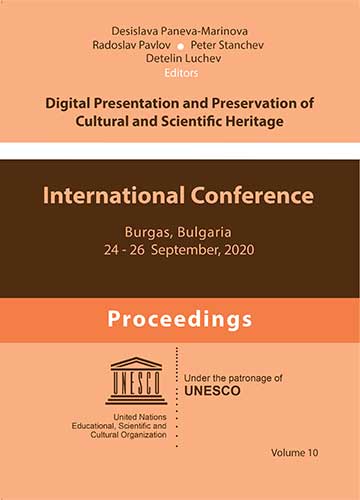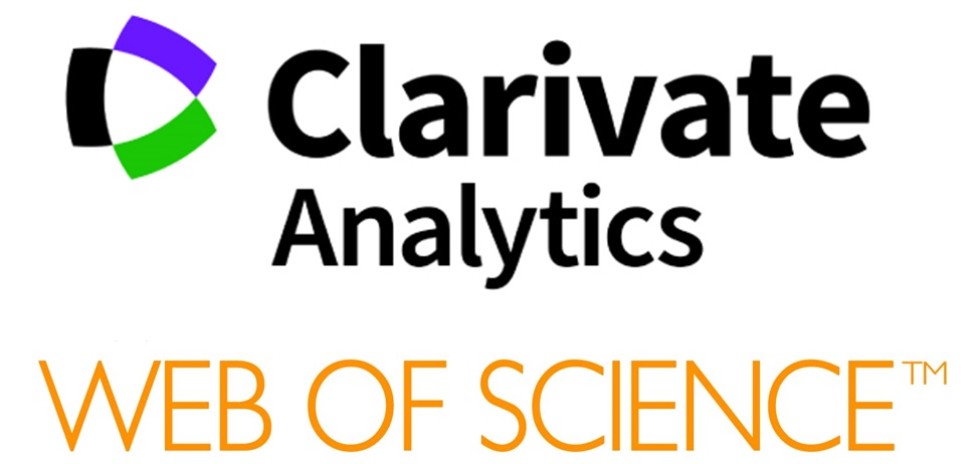Towards a Hybrid Educational-Persuasive Framework for a Library-Oriented Serious Game to Alleviate Library Anxiety
DOI:
https://doi.org/10.55630/dipp.2025.15.16Keywords:
Serious Games, Libraries, Persuasive Design, Game-Based LearningAbstract
This paper proposes a Hybrid Educational-Persuasive Framework for designing serious games that alleviate library anxiety. Integrating pedagogical and persuasive elements, it emphasizes learner context, motivation, and gameplay mechanics to boost user familiarity and comfort, serving as a model for educational and persuasive game design across multiple domains.References
Ahrens, D. (2015). Serious Games – A New Perspective on Workbased Learning. Procedia - Social and Behavioral Sciences, 204, 277-281. https://doi.org/10.1016/j.sbspro.2015.08.152
Akpınar, Y., Kutbay, E., & Akkaya, A. (2023). Designing Exploratory Serious Games with Learning Supports. Journal of Theory and Practice in Education, 19 (1), 83-96. https://doi.org/10.17244/eku.1248565
Arnab, S., Lim, T., Carvalho, M. B., Bellotti, F., de Freitas, S., Louchart, S.,...De Gloria, A. (2015). Mapping Learning and Game Mechanics for Serious Games Analysis. British Journal of Educational Technology, 46 (2), 391-411. https://doi.org/https://doi.org/10.1111/bjet.12113
Barclay, D. A. (2017). Space and the Social Worth of Public Libraries. Public Library Quarterly, 36 (4), 267-273. https://doi.org/10.1080/01616846.2017.1327767
Barr, M., Munro, K., & Hopfgartner, F. (2016, July 17-21). Increasing Engagement With the Library via Gamification [Paper presentation]. Third International Workshop on Gamification for Information Retrieval (GamifIR'16), Piza, Italy. https://eprints.gla.ac.uk/120392/1/120392.pdf
Bostick, S. L. (1992). The Development and Validation of the Library Anxiety Scale [Pd.D. thesis, Wayne State University]. Detroit, USA. https://www.proquest.com/openview/9682f484578028491b665fa74180583f/1?cbl=18750&diss=y&pqorigsite=gscholar
Braad, E., Sandovar, A., & Žavcer, G. (2016). Processes and Models for Serious Game Design and Development. In: R. Dörner, S. Göbel, M. Kickmeier-Rust, M. Masuch, K. Z (Eds.) Entertainment Computing and Serious Games. Lecture Notes in Computer Science, vol 9970. Springer, Cham. https://doi.org/10.1007/978-3-319-46152-6_5
Carlile, H. (2007). The Implications of Library Anxiety for Academic Reference Services: A Review of Literature. Australian Academic & Research Libraries, 38 (2), 129-147. https://doi.org/10.1080/00048623.2007.10721282
Carvalho, M., Bellotti, F., Berta, R., De Gloria, A., Islas Sedano, C., Hauge, J.,...Rauterberg, M. (2015). An Activity Theory-Based Model for Serious Games Analysis and Conceptual Design. Computers & Education, 87, 166. https://doi.org/10.1016/j.compedu.2015.03.023
Collins, L., Uzoaru, F., & Ross, L. (2024). Identifying the Strategies That Promote an Immersive Online Learning Environment for Population Health Management Graduate Students. International Journal of Higher Education Pedagogies, 5, 44-54. https://doi.org/10.33422/ijhep.v5i1.597
Danforth, L. (2011). Gamification and Libraries. Library Journal, 136(3), 84-84. de Freitas, S., & Jarvis, S. (2006, December 04-07). A Framework for Developing Serious Games to Meet Learner Needs [Paper presentation]. The Interservice/Industry Training, Simulation & Education Conference (I/ITSEC), Orlando, Florida, USA. https://researchportal.murdoch.edu.au/view/pdfCoverPage?instCode=61MUN_INST&filePid=13137069820007891&download=true
Djafarova, N., Dimitriadou, A., Zefi, L., & Turetken, O. (2023). The Art of Serious Game Design: A Framework and Methodology. AIS Transactions on Human-Computer Interaction, 15 (3), 322-349. https://doi.org/ 10.17705/1thci.00193
Djaouti, D., Alvarez, J., Jessel, J.-P., & Rampnoux, O. (2011). Origins of Serious Games. In M. Ma, A. Oikonomou, L. C. Jain (Eds.), Serious Games and Edutainment Applications (pp. 25-43). Springer London. https://doi.org/10.1007/978-1-4471-2161-9_3
Goldman, C., Turnbow, D., Roth, A., & Friedman, L. (2016). Creating an Engaging Library Orientation: First Year Experience Courses at University of California, San Diego. Communications in Information Literacy, 10 (1), 91-98. https://doi.org/10.15760/comminfolit.2016.10.1.16
Hvenegaard Rasmussen, C., Rydbeck, K., & Larsen, H. (2022). Differences and similarities between LAMs, and their pursuit of commons challenges. In C. Hvenegaard Rasmussen, K. Rydbeck, & H. Larsen (Eds.), Libraries, Archives and Museums in Transition (pp. 231-241). Routledge. https://doi.org/10.4324/9781003188834
Khan, I., Melro, A., Amaro, A. C., & Oliveira, L. (2021). Role of Gamification in Cultural Heritage Dissemination: A Systematic Review. In XS. Yang, S. Sherratt, N. Dey & A. Joshi (Eds.) Proceedings of Sixth International Congress on Information and Communication Technology. Lecture Notes in Networks and Systems, 235. (pp. 393-400). Springer, Singapore. https://doi.org/10.1007/978-981-16-2377-6_37
Kraiger, K., Ford, J., & Salas, E. (1993). Application of Cognitive, Skill-Based, and Affective Theories of Learning Outcomes to New Methods of Training Evaluation. Journal of Applied Psychology, 78, 311-328. https://doi.org/10.1037//0021-9010.78.2.311
Kratchanov, I., & Minev, D. (2024). Adventure in Plovdiv’s Cultural Space: An Augmented Reality Serious Game. Digital Presentation and Preservation of Cultural and Scientific Heritage, 14, 281–288. https://doi.org/10.55630/dipp.2024.14.27
Laamarti, F., Eid, M., & El Saddik, A. (2014). An Overview of Serious Games. International Journal of Computer Games Technology, 2014. https://doi.org/10.1155/2014/358152
McClintock, D. (2022, October 12-14). All Together Now, Using Multiple Frameworks to Inform Serious Game Design and Development. [Paper presentation]. Meaningful Play 2022, East Lansing, MI, USA. https://meaningfulplay.msu.edu/proceedings2022/mp2022_paper_5725.pdf
Mellon, C. (1986). Library Anxiety: A Grounded Theory and Its Development. College and Research Libraries, 47 (2), 160-165. https://crl.acrl.org/index.php/crl/article/view/14195/15641
Nourse Reed, K., & Miller, A. (2020). Applying Gamification to the Library Orientation: A Study of Interactive User Experience and Engagement Preferences. Information Technology and Libraries, 39 (3), 1-26. https://doi.org/10.6017/ital.v39i3.12209
Oinas-Kukkonen, H., & Harjumaa, M. (2009). Persuasive Systems Design: Key Issues, Process Model, and System Features. Communications of the Association for Information Systems, 24. https://doi.org/10.17705/1CAIS.02428
Oyibo, K. (2021). EMVE-DeCK: A Theory-Based Framework for Designing and Tailoring Persuasive Technology. In J. Masthoff, E. Herder, N. Tintarev & M. Tkalčič (Eds.), Adjunct Proceedings of the 29th ACM Conference on User Modeling, Adaptation and Personalization (UMAP '21). (pp. 257–267). Association for Computing Machinery, New York, NY, USA, https://doi.org/10.1145/3450614.3464617
Proulx, J.-N., Romero, M., & Arnab, S. (2016). Learning Mechanics and Game Mechanics Under the Perspective of Self Determination Theory to Foster Motivation in Digital Game Based Learning. Simulation & Gaming, 48, 17. https://doi.org/10.1177/1046878116674399
Running in the Halls. (2025). Retrieved 11.04.2025 from https://rith.co.uk/
Torning, K., & Oinas-Kukkonen, H. (2009). Persuasive system design: state of the art and future directions. In Proceedings of the 4th International Conference on Persuasive Technology (Persuasive '09). Article 30 (pp. 1–8). Association for Computing Machinery, New York, NY, USA. https://doi.org/10.1145/1541948.1541989
The Open University. (2025). An OpenTree adventure. Retrieved 11.04.2025 from https://www.open.ac.uk/library/opentree
Walsh, A. (2014). The Potential for Using Gamification in Academic Libraries in Order to Increase Student Engagement and Achievement. Nordic Journal of Information Literacy in Higher Education, 6 (1), 39–51. https://doi.org/10.15845/noril.v6i1.214
Wiafe, I., Nakata, K., & Gulliver, S. (2014). Categorizing users in behavior change support systems based on cognitive dissonance. Personal and Ubiquitous Computing, 18. https://doi.org/10.1007/s00779-014-0782-3
Downloads
Published
How to Cite
Issue
Section
License
Copyright (c) 2025 Digital Presentation and Preservation of Cultural and Scientific Heritage

This work is licensed under a Creative Commons Attribution-NonCommercial 4.0 International License.



